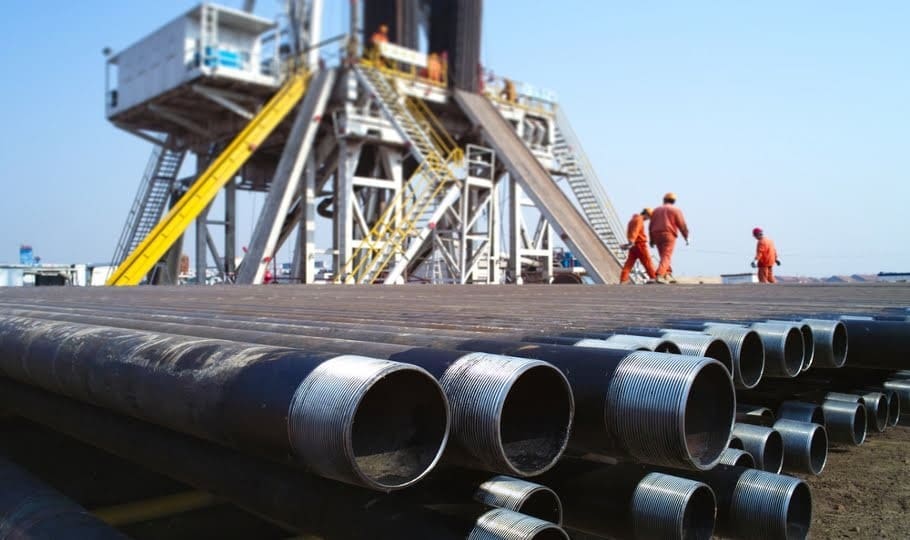Managing drilling fluid waste is a critical aspect of oil and gas operations, particularly as Drilling Mud Waste Management is the most important of oil and gas projects, especially as environmental issues and regulatory requirements become stricter. Drilling fluid, also known as drilling mud, is the basic element of the drilling process as it contributes to lubrication, pressure control, and material removal. However, significantly, it turns into a waste product containing various chemicals, heavy metals, and hydrocarbons that can pose environmental hazards if not managed properly. Consegic Business Intelligence analyzes that the onshore drilling fluid market is growing with a CAGR of 5.1% during the forecast period (2023-2031), and the market is projected to be valued at USD 6,660.67 Million by 2031 and USD 4,457.40 Million in 2023 from USD 4,269.19 Million in 2022. The challenges with the treatment of drilling fluid waste are caused by its composition, regulatory requirements, environmental impact, and logistical complexities, which is why it has been a great concern for the companies that operate in this sector.
The drilling fluids comprise a mixture of water or oil-based components, which are complicated by different chemicals that include barite, clay, polymers, and sometimes even toxic heavy metals. These chemicals are designed to address very specific needs that come from the technology; however, such a level of treatment personalization causes a management problem with waste treatment and disposal. The fact that the composition of the drilling fluids often changes due to the variation in the depth, pressure, and temperature of the drill site, therefore, requires waste management solutions that are very specific to the particular case. For example, oil-based muds have a positive lubricating effect but they exhibit a significant issue in terms of disposal since they contain hydrocarbons, which can destroy the ecosystems in water and land if not treated properly.
The consequences of improper disposal of drilling fluid waste, both environmentally and health-wise, are great. Mud drilling that is contaminated with chemical substances can leach hazardous materials into the soil and groundwater to destroy plants, animals, and human beings. The chemicals in drilling fluids like benzene, toluene, and xylene can be toxic and are usually the main cause of longer-lasting pollution problems while cadmium, lead, and other heavy metals cause bioaccumulation within the food chain. Successful waste management systems should thus use procedures that are effective in avoiding soil and water contamination. On the other hand, the generation of drilling gases may lead to air pollution if they are released into the atmosphere and cause health problems to the surrounding communities and workers near the drilling site.
The organization of oil and gas production is highly regulated and must comply with the environmental drilling fluid waste regulations. The regulatory requirements are different from one area to another, but they mainly prescribe strict rules for the handling, transportation, and disposal of drilling fluids to protect the environment and the public. For illustration, the Environmental Protection Agency (EPA) in the United States has the mandate of controlling drilling fluid waste management under the Resource Conservation and Recovery Act (RCRA), and they demand that the waste be treated and disposed of safely. Meeting these regulations can be a complex and expensive affair for companies as they mostly invest in advanced treatment processes, conduct regular training for staff on proper waste handling, and manage the scheduled disposal of waste that complies with national and local regulations.
The logistics of drilling fluid waste management are another challenge as well. In cases of drilling undertaken in remote places, the transportation and infrastructural constraints make the collection, treatment, and disposal of waste properly a herculean task. Transportation of hazardous waste is also subjected to regulation, which implies special containment measures to ensure no spill or leak occurs. These logistical difficulties also lead to an increase in operational costs as well as a rise in complexity; therefore, a trade-off is to transport the waste to far-off infrastructures or to install treatment plants on-site. On-site treatment is preferred as it alleviates transportation needs, but the cost of capital equipment, technology, and labor makes this a less viable alternative for the small players.
Economic factors, to a large extent, equally impact the managerial functions of drilling fluid waste. Waste treatment, regulatory compliance, and safe disposal costs are high, and hence, this is a formidable challenge to small and medium companies with limited funds for their activity. The most sophisticated technologies, such as thermal desorption, centrifugation, and bioremediation, are profitable but expensive to put into practice. Although these methods might reduce the carbon footprint of drilling waste, the soaring costs have remained a major hindrance to their universal use. Besides that, not all treatment technologies apply to each type of drilling fluid; companies are obliged to implement customized and diversified solutions for the various projects they have.
Disposal of drilling fluid waste is one of the problems of the oil and gas industry, and it involves environmental, regulatory, logistical, and economic aspects. The implementation of safe handling and waste disposal is essential in most transportation cases to mitigate environmental damage and health. However, the difficult nature of the waste and the solicitation price of the treatment make this issue a difficult one. In the future, the adoption of sustainable, affordable technologies and the development of best practices will be the key to overcoming these hurdles and driving drilling operations towards the industry’s growing commitment to environmental stewardship.





